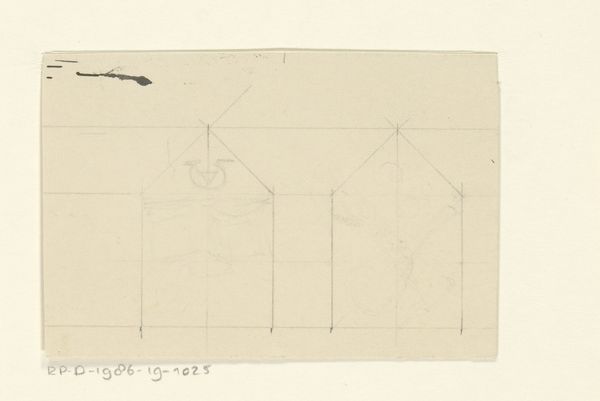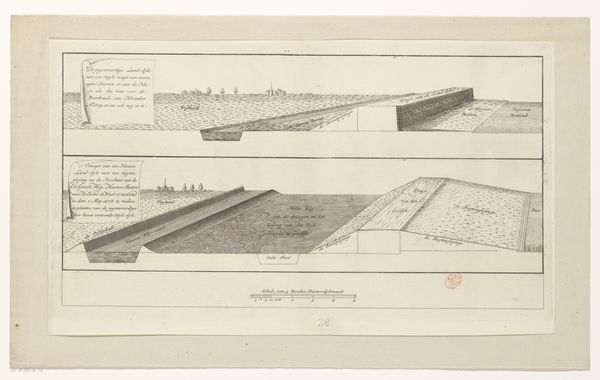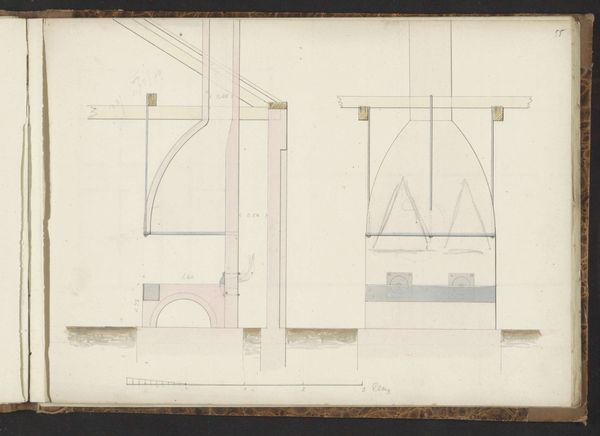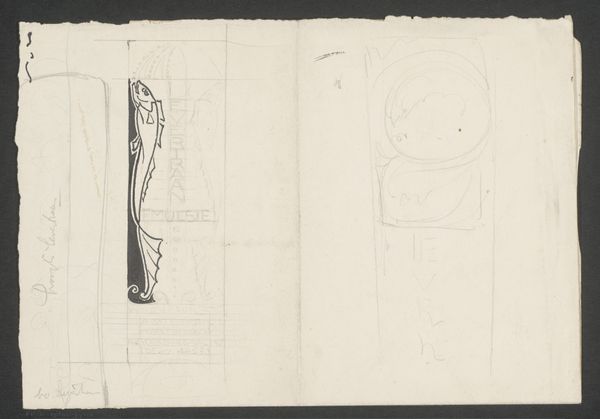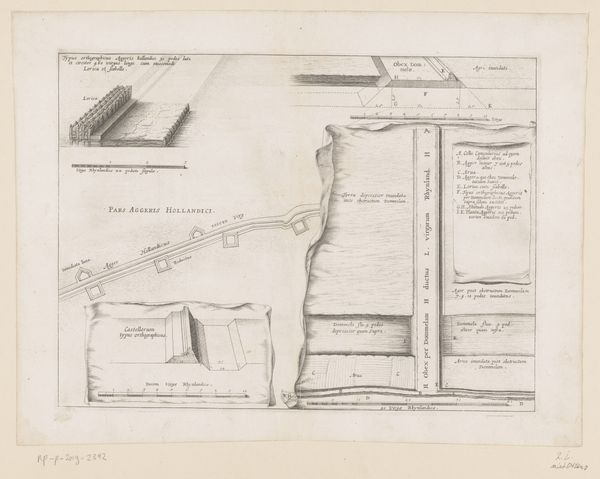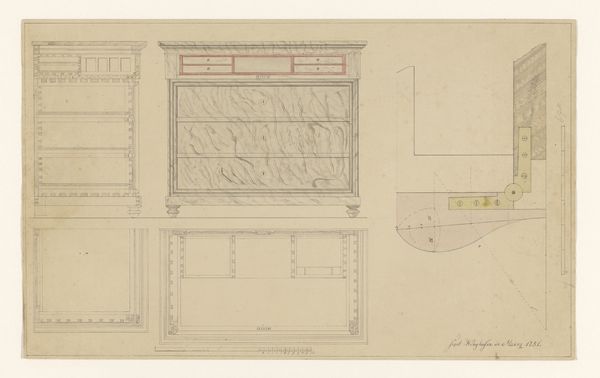
Ontwerp voor een theedoekrek met twee fantasiekoppen c. 1900
0:00
0:00
drawing, pen
#
drawing
#
light pencil work
#
art-nouveau
#
quirky sketch
#
old engraving style
#
personal sketchbook
#
idea generation sketch
#
ink drawing experimentation
#
geometric
#
pen-ink sketch
#
sketchbook drawing
#
pen
#
storyboard and sketchbook work
#
sketchbook art
Dimensions: height 154 mm, width 447 mm
Copyright: Rijks Museum: Open Domain
Curator: I am immediately struck by the unassuming nature of this pen drawing, an almost clinical study. Editor: Indeed. What we have here is “Ontwerp voor een theedoekrek met twee fantasiekoppen,” or "Design for a tea towel rack with two fantasy heads," conceived around 1900 by Reinier Willem Petrus de Vries. Curator: The rigid symmetry and geometric construction certainly lend it that preparatory feel. Note the flatness, the minimal shading—it serves purely to map form and structure. Editor: Yet, despite the apparent practicality, these are hardly commonplace fixtures, are they? The faces feel somewhat unsettling. Curator: Function follows form, but it seems, so does expression. Look closely at the simplification of facial features, pared down to geometric shapes yet retaining a clear psychological profile. We are, after all, observing an idea rendered in the language of art nouveau. Editor: I wonder about the process. Did the artist, de Vries, envision a specific material? Was it meant for mass production or a singular commission? Curator: These are relevant avenues for thought, especially regarding its creation, context and design of production and labor, which may challenge established conventions between artworks, handicrafts and materiality. The artist must grapple with its intended creation and societal considerations and the transformation into an art form, going beyond utilitarian ideas. Editor: To return to the purely visual, note how De Vries establishes rhythm using the linear qualities and alternating solid forms. The implied movement generates visual equilibrium. Curator: Perhaps, but I can’t help but think that the artist wanted to generate a certain level of production to ensure artistic ideals meet public or private artistic commissions. Its intention can be evaluated when placed under historical lens and analysis of social structure. Editor: It seems as though the more closely one observes, the more one understands the harmonious synthesis. I see it more than ever after our analysis! Curator: An initial blueprint can also spark ideas that may surpass utilitarian uses to achieve the goal and creative expression and artistry as perceived by de Vries!
Comments
No comments
Be the first to comment and join the conversation on the ultimate creative platform.


